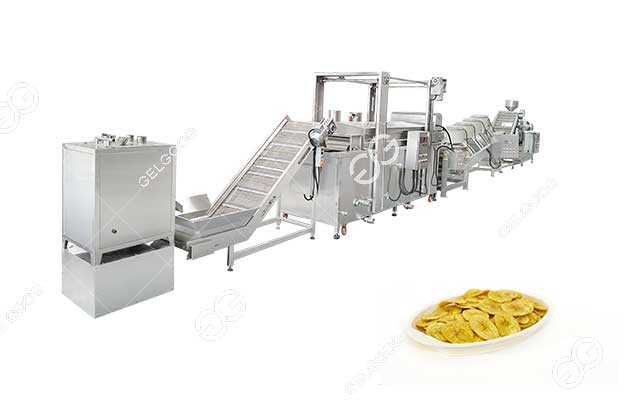Introduction: Plantain chips are a delicious snack that is prized around the world for their crunchy texture and delicious taste. Turning fresh, starchy green plantains into these tasty treats requires precision and care, especially when produced on an industrial scale. In this article, we’ll walk you through how to make plantain chips step by step in factory, detailing each step to give you an inside look at how these golden delicacies are made.
Step 1: Sourcing and Selecting
The first step in any quality production is sourcing the best raw materials. For plantain chips, this means selecting ripe but firm green plantains, as they offer the perfect balance between starch and sweetness. Factories often work with local farmers or suppliers to ensure a constant supply of high-quality fruit.
Step 2: Cleaning and Peeling
Upon arrival at the factory, the plantains are thoroughly cleaned to remove dirt and debris. They are then processed using a plantain blanching machine to loosen the skin, which can then be manually peeled off. The peeled plantains are washed again to ensure complete cleanliness.
Step 3: Slicing
It is key to even cooking and optimal crispness. Automatic plantain slicers slice the plantains into thin slices, usually about 2-3 mm thick. This not only ensures consistency in the final product, but also speeds up the production process significantly.
Step 4: Blanching
To prevent discoloration and to soften the plantain slices slightly, they are briefly blanched in hot water. This step also helps remove excess starch, which can cause the chips to become soggy. The temperature and duration of blanching are carefully controlled to maintain the integrity of the plantain chips.
Step 5: Air-Drying
After blanching, the slices are dried to remove excess moisture before frying. Air drying machinery is usually used to achieve this quickly and efficiently. Proper drying ensures a crispy texture after frying.
Step 6: Frying
The dried slices are then fried in large industrial banana frying machinery, usually using vegetable oils such as palm or sunflower oil. The frying temperature is kept between 170°C and 190°C to achieve the perfect golden color and crispness. Automated systems regulate oil temperature and frying time for consistent results.

Step 7: Seasoning and Seasoning
Immediately after frying, sprinkle the hot chips with a pinch of salt or other seasonings, such as chili powder, garlic or lime zest. Some plants offer a variety of flavors to suit different tastes. A tumbler evenly distributes the seasonings on the plantain chips.
Step 8: Cooling and Packaging
The seasoned plantain chips are quickly cooled to stop further cooking and lock in crispness. They are then conveyed to the packaging area, where they are weighed, sealed in airtight bags, and flushed with nitrogen to extend shelf life and preserve freshness. Automated packaging lines ensure speed and hygiene.
Step 9: Quality Control and Inspections
Throughout the process, quality control inspections are performed to ensure that each batch meets the highest standards. Visual inspections, taste tests, and laboratory analyses for moisture content and microbiological safety are all routine practices.
Step 10: Storage and Distribution
Finally, the packaged plantain chips are stored in a temperature-controlled warehouse until ready to ship. Then it is distributed to retailers, wholesalers or directly to consumers through online platforms.
Conclusion: Making plantain chips in a factory environment is a meticulous process that combines traditional cooking techniques with modern technology. We can provide a plantain chip production line to process plantains from peeling, slicing, blanching, frying, de-oiling, seasoning, packaging and other processing steps to process plantains into plantain chips. If you are interested in starting this business, you can always contact us and we will provide you with a turnkey project.